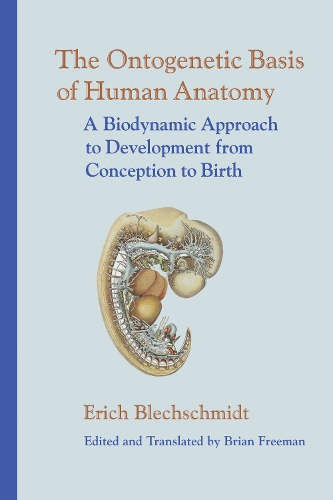
The Ontogenetic Basis of Human Anatomy: A Biodynamic Approach to Development from Conception to Birth
(Hardback)
Publishing Details
The Ontogenetic Basis of Human Anatomy: A Biodynamic Approach to Development from Conception to Birth
By (Author) Erich Blechschmidt
Edited by Brian Freeman
North Atlantic Books,U.S.
North Atlantic Books,U.S.
15th July 2011
United States
Classifications
General
Non Fiction
Human reproduction, growth and development
Anatomy
Physiology
612.6
Physical Properties
Hardback
272
Width 160mm, Height 235mm, Spine 21mm
561g
Description
Although biomechanical embryology can be traced back to the 19th century, the discipline received its greatest stimulus from the work of the German embryologist Erich Blechschmidt (1904-1992). Based on a translation of Blechschmidts monograph Anatomie und Ontogenese des Menschen, this book presents an overview of the changing form and structure of the human anatomy. Blechschmidts research is based on a major collection of accurate reconstructions of human embryos and offers a new way of looking at human development.
Reviews
"Erich Blechschmidt profoundly reaches through the doorway of the most sacred and the most scientific."
-James Jealous, D.O.
Author Bio
Erich Blechschmidt was an anatomist and embryologist who worked for more than forty years on the problem of human form and the way that form arises in the course of ontogeny, principally during the first eight weeks or so after conception. He has provided us with more than 120 scientific papers and numerous books concerning the development of human form and function. One unique aspect of Blechschmidt's research is that it concentrates on the evidence presented by the human embryo itself, in the form of a comprehensive collection of about 200,000 serial sections of embryos at different ages and sixty-four enlarged total reconstructions at the University of Guttingen (The Blechschmidt Collection and Museum). The sustained investigation of this wealth of material led to a totally new way of looking at early human development, which compels us to re-think older interpretations based mainly on phylogenetic or molecular biological studies. It is possible to see how adult functions arise naturally and consistently from the embryo's earlier growth functions. This present book is a condensation of many of these findings and a presentation of the new viewpoint. -Brian Freeman, Ph.D. Anatomy, UNSW, from the Preface
